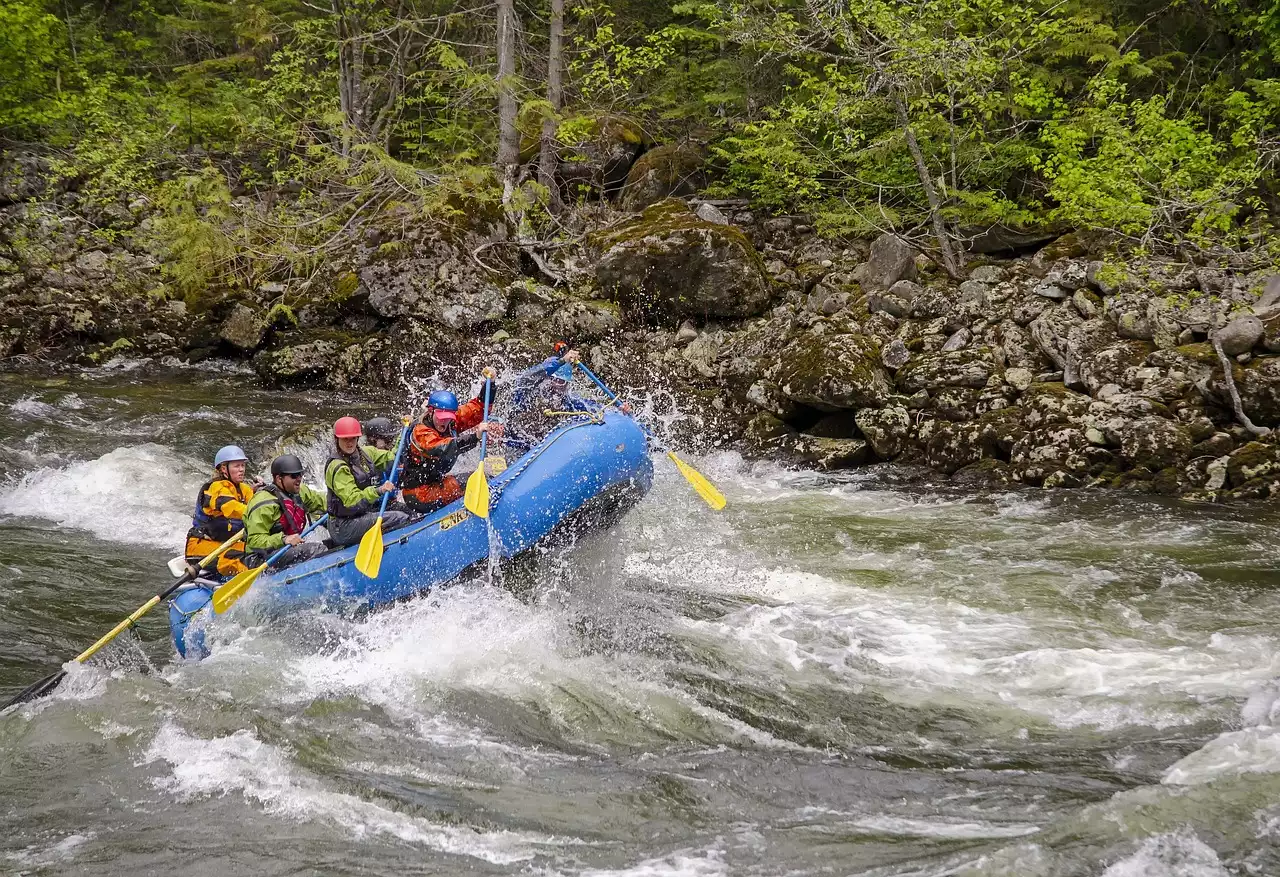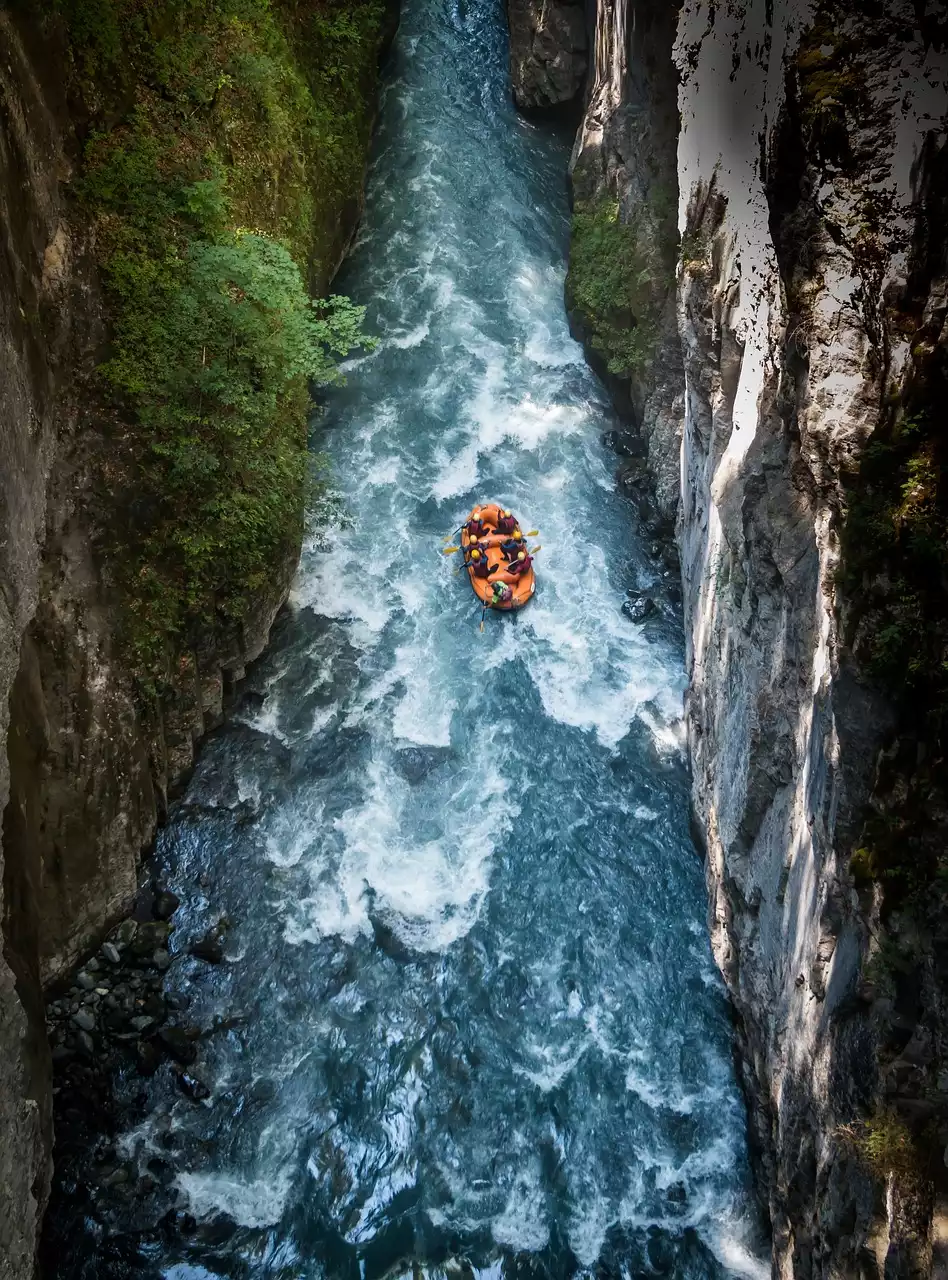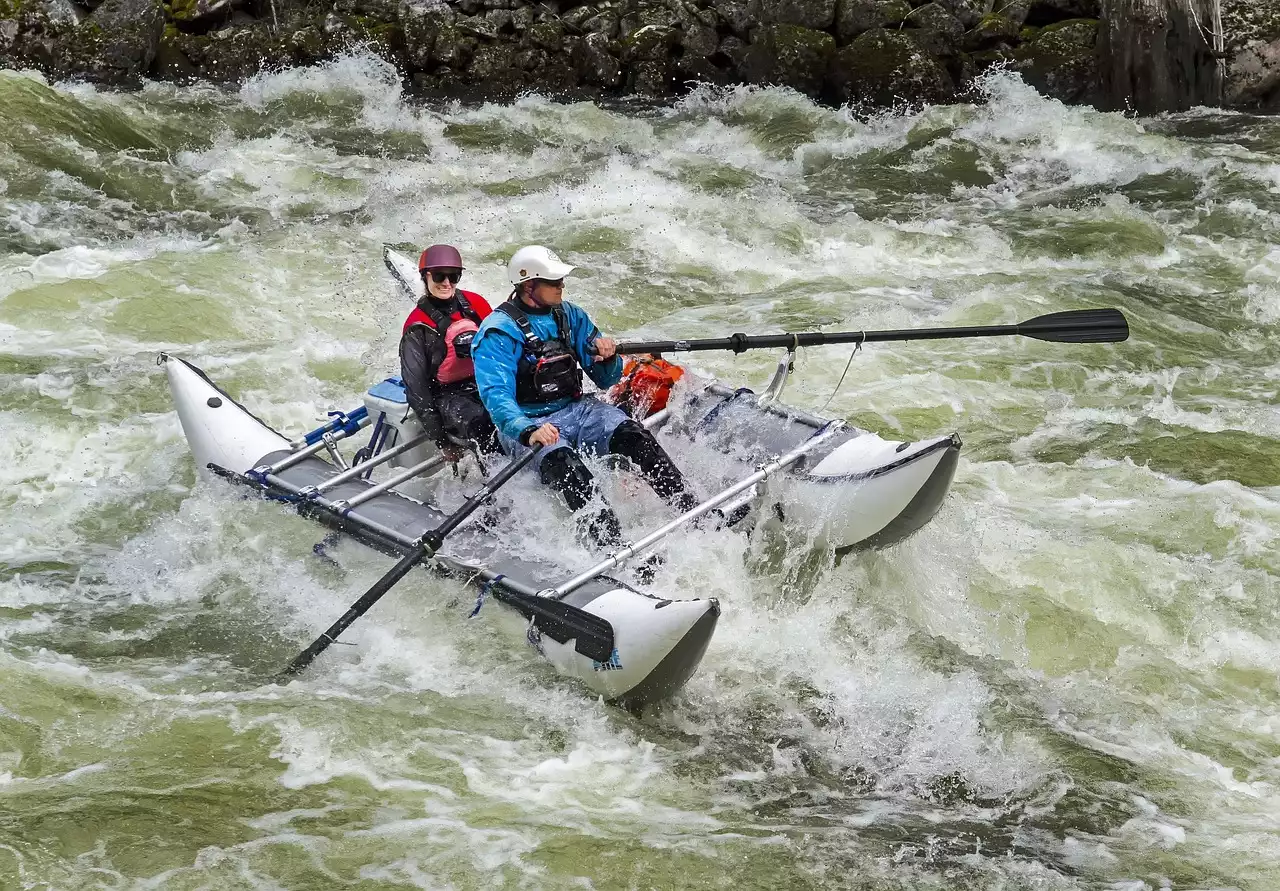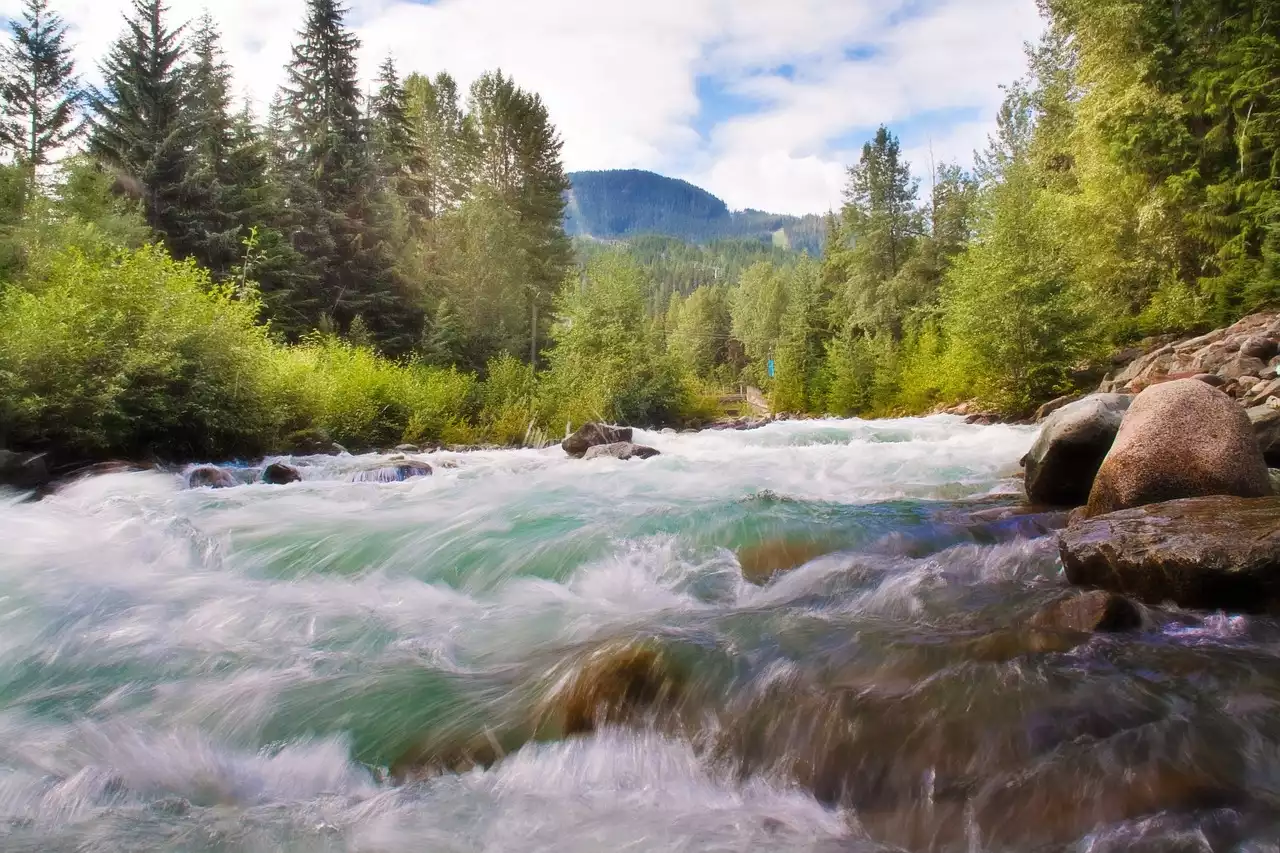Understanding the Rapids
Before we dive into the techniques, it's essential to understand the rapids. Whitewater rapids are classified based on their difficulty level. The International Scale of River Difficulty (ISRD) classifies rapids on a scale from I to VI, with Class I being the easiest and Class VI being the most challenging. It's crucial to know the classification of the rapids you're planning to raft.
The classification of the rapids is determined by several factors, including water volume, gradient, and obstruction. The higher the classification, the more complex the rapids will be. Class I and II rapids are ideal for beginners as they are gentle and easy to navigate. Class III and IV rapids are more challenging and require more advanced techniques. Class V and VI rapids are for experts only and should be approached with caution.
It's important to note that rapids can change with the weather and the water level. A Class III rapid can become a Class IV if the water level rises, making it essential to check the weather and water conditions before embarking on a rafting trip.
Whitewater Rafting Gear and Equipment
Proper equipment is essential for a safe and enjoyable whitewater rafting experience. The following are essential gear and equipment needed for whitewater rafting:
1. Paddle: A paddle is the primary tool used to navigate the rapids. It should be lightweight and sturdy enough to withstand the force of the water.
2. Life Jacket: A life jacket is a crucial safety gear that keeps you afloat in case you fall out of the raft. It should be snug and comfortable, with enough buoyancy to keep you afloat.
3. Helmet: A helmet protects your head from rocks and other obstacles in the water. It should fit snugly and securely.
4. Wetsuit: A wetsuit keeps you warm in cold water and protects your skin from scratches and abrasions.
5. Footwear: Water shoes or sandals with a good grip are ideal for rafting. Avoid wearing flip-flops or any footwear that can easily come off.
It's essential to rent or purchase high-quality gear and equipment from reputable outfitters. Don't compromise on safety by using substandard gear.
Safety Precautions and Tips
Whitewater rafting can be dangerous if proper safety precautions are not taken. The following are essential safety tips to keep in mind:
1. Always wear a life jacket and helmet.
2. Listen carefully to your guide's instructions.
3. Never raft alone. Always go with a trained guide or an experienced group.
4. Know your limits and only attempt rapids that match your skill level.
5. Avoid alcohol and drugs before and during the rafting trip.
6. Check the weather and water conditions before embarking on a rafting trip.
It's crucial to follow these safety tips to ensure a safe and enjoyable whitewater rafting experience.
Basic Whitewater Rafting Techniques
Mastering basic whitewater rafting techniques is essential for navigating the rapids safely. The following are basic techniques that every beginner should know:
1. Paddle Strokes: The forward stroke is the most basic stroke used to move the raft forward. The backstroke is used to slow down or stop the raft. The sweep stroke is used to turn the raft.
2. High-Siding: High-siding is a technique used to avoid capsizing the raft. When the raft approaches an obstacle, everyone on the raft leans to the opposite side to prevent the raft from tipping over.
3. Bracing: Bracing is a technique used to maintain balance on the raft. It involves placing the paddle flat on the water surface and leaning into it to maintain balance.
It's essential to practice these basic techniques before attempting more challenging rapids.
Advanced Whitewater Rafting Techniques
Advanced whitewater rafting techniques are necessary for navigating more challenging rapids. The following are some techniques that every experienced rafter should know:
1. Eddy Turn: An eddy turn is a technique used to turn the raft in the opposite direction of the current. It's used to navigate around obstacles or to avoid entering a rapid.
2. Ferrying: Ferrying is a technique used to move the raft across the current from one side of the river to the other. It's used to avoid obstacles or to enter a specific rapid.
3. Surfing: Surfing is a technique used to ride the waves of a rapid. It involves maneuvering the raft to catch the wave and then riding it as long as possible.
It's crucial to practice these advanced techniques under the guidance of a trained guide.
Communication and Teamwork in Whitewater Rafting
Communication and teamwork are essential for a successful whitewater rafting trip. The following are communication and teamwork techniques that every rafter should know:
1. Listening to the Guide: It's essential to listen carefully to your guide's instructions and follow them precisely.
2. Calling Commands: The guide calls commands to the rafters, indicating when to paddle or stop paddling. It's essential to respond to these commands promptly.
3. Teamwork: Rafting is a team sport, and everyone on the raft must work together to navigate the rapids safely.
Effective communication and teamwork are vital for a successful whitewater rafting trip.
Navigating Different Types of Rapids
Navigating different types of rapids requires different techniques. The following are some types of rapids and the techniques used to navigate them:
1. Wave Trains: Wave trains are continuous waves that can be easily navigated by paddling straight through them.
2. Holes: Holes are areas where the water flows back upstream, creating a hole. Paddling hard through the hole is the best way to navigate it.
3. Hydraulics: Hydraulics are areas where the water flows up and over a rock, creating a powerful current. It's essential to avoid hydraulics or paddle around them.
It's crucial to know the techniques for navigating different types of rapids to do so safely and effectively.
Whitewater Rafting Destinations and Tours
Whitewater rafting can be enjoyed in several destinations around the world. The following are some of the best whitewater rafting destinations:
1. Grand Canyon, Arizona: The Grand Canyon offers some of the most challenging rapids in the world.
2. Zambezi River, Zambia: The Zambezi River offers some of the most scenic and challenging rapids in Africa.
3. Futaleufú River, Chile: The Futaleufú River offers some of the most beautiful and challenging rapids in South America.
There are several whitewater rafting tours available in these destinations, ranging from day trips to multi-day expeditions. It's essential to choose a tour that matches your skill level and interests.
Next Steps
Whitewater rafting is an exhilarating adventure that requires a unique set of skills and techniques to navigate the rapids safely. Mastering these skills takes time, practice, and proper guidance. We hope this comprehensive guide has provided you with the essential knowledge and techniques to become an expert at whitewater rafting. Remember to always prioritize safety, listen to your guide's instructions, and have fun!









